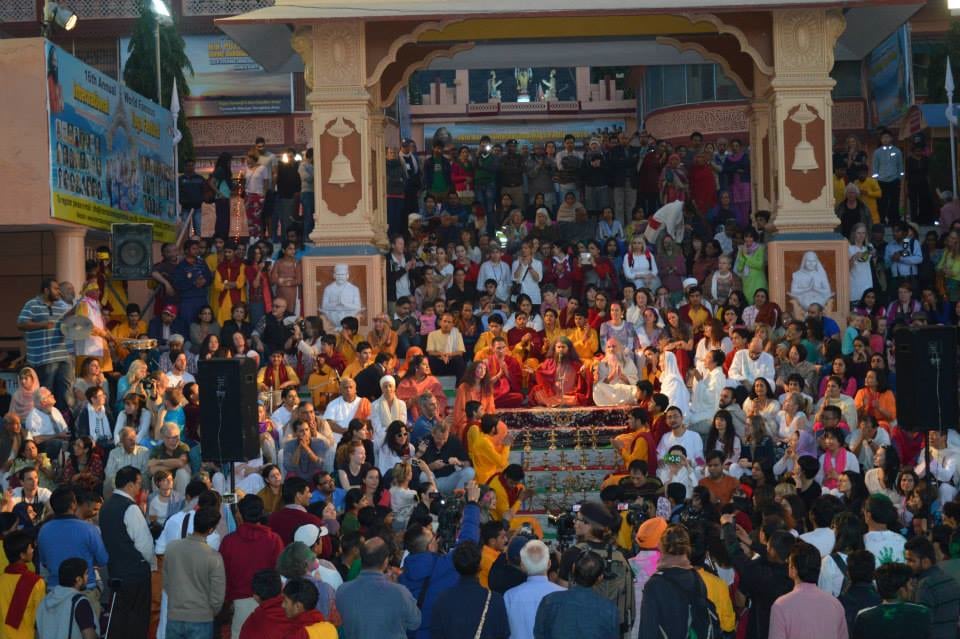Magic unfolds almost effortlessly when you step onto the soil of the birthplace of yoga. If one is open to it, you can feel yourself swept up in the spirit of mantra, drifting on intoxicating melodies, engrossed in the swelling of emotion, allured by sweet smelling incense, drawing one further toward a state of surrender, releasing all hold on reality and diving into an ocean of devotion. To explore oneself in the landscape of India is to deepen ones inner commitment to connect to the innermost chamber of Self, to release all shackles of past and future, and fully surrender to the vastness of Now.
These were my feelings as I sat on the banks of the Ganges listening to the Arti ceremony led by Swami Chidananda Saraswati during the International Yoga Festival in March 2014. I have travelled to India a number of times. Like many Westerners the allure of India captured my attention when I first read Autobiography of a Yogi by Paramahansa Yogananada. I am in awe of the vast wisdom passed down in the Vedas and Upanishads, and in all those who have devoted their lives to understanding themselves at every level, to experiencing the true meaning of yoga – union between my part and the whole, between myself and the infinite.
I attend and teach at many yoga festivals in the United States. These are often held in beautiful locations in Nature and celebrate the culture that has grown up around the practice of yoga asana. Last year was my first time attending and sharing yogic teachings at The International Yoga Festival in Rishikesh. Right away I could feel a special energy, where the focus was around the inner teachings, devotional practices and seva. Of course, organizations in many ways tend to reflect their leaders, and Swami Chidananda Saraswati has a special aura of grace and light. He is a holy man, who is very present with the realities of life and who is dedicated to reducing suffering. He is the founder of several humanitarian and environmental organizations including Ganga Action Parivar, to preserve and protect the Ganga River and its tributaries. This action to protect and preserve the sacred Ma Ganga is an example of his ability to live in the reality of the present moment and address a practical issue concerning environmental protection. The rivers on earth in many ways reflect the inner rivers of our blood and lymph. The larger ecology and our body ecology are intimately connected. To be in harmony with nature we must be mindful to not pollute the environment or ourselves.
In this current era, where so many are suffering and caught up in hardship in life, experiences like those shared at the IYF offer an important perspective. Here under the guiding eye of swamis, living saints, and yoga masters, people are invited to explore another dimension, to dust off the lens through which they view life, and to refocus on the light of possibility: opening to elements of hope, faith and a consistency between spiritual values and practices. This opens a conversation about how we can all grow individually while taking into account and embracing others, realizing that we are all a unique composition reflecting the totality. Yoga itself was always to take us into the fullest life we can have, and part of that is creating the balance between personal development and our interdependence and connectedness.
I left the IYF, now for the second year I have taught and attended, with an attitude of gratitude. The underlying theme I felt reflected the idea of cultivating an attitude of acceptance, presence and regard for self and others and taking that into our daily life with family, friends and the world at large. Where-ever you are in your life and circumstances I hope you can find a way to tune into what is happening at the International Yoga Festival. There is hope for us all in these shared experiences of life.



